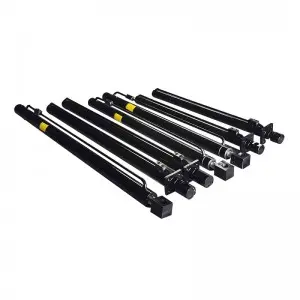****

Understanding the Significance of Cylinders in Modern Engineering and Their Varied Applications Across Multiple Industries
Cylinders are fundamental geometric shapes defined as three-dimensional solids with two parallel circular bases connected by a curved surface. This simple yet profound shape has influenced a multitude of industries and engineering disciplines, serving various essential functions due to its unique mechanical properties. From manufacturing to the automotive industry, the significance of cylinders is undeniable, as they exhibit strength, uniform pressure distribution, and versatile applications.
One of the most recognized applications of cylinders is in the field of engineering, particularly in constructing engines. Internal combustion engines, which power most vehicles today, utilize cylindrical liners known as engine cylinders. These cylinders are crucial as they house the pistons, enabling them to perform the reciprocating motion that drives the engine. The unique cylindrical shape allows for a smooth movement of pistons, leading to enhanced efficiency during fuel combustion. The sturdy design of engine cylinders also allows them to withstand high levels of pressure and heat, making them indispensable in automotive engineering.
In addition to their role in engines, cylinders are frequently employed in the manufacturing of hydraulic systems. Hydraulic cylinders, which convert hydraulic energy into linear mechanical energy, are used in countless applications, from hydraulic presses to construction machinery such as excavators and forklifts. The cylindrical shape of these devices ensures that they can withstand significant pressurized conditions, delivering powerful movements and lifting capabilities. The design also allows for compact assembly while maintaining high durability and efficiency. As industries advance and require more robust machinery, the reliance on cylinders for hydraulic power continues to grow.
The application of cylinders extends to various other sectors, such as aerospace and gas industries. In aerospace engineering, fuel tanks often take the form of cylinders due to their aerodynamic properties. The cylindrical design minimizes drag during flight and optimizes the storage of fuel, which is essential for long-duration flights. Similarly, in the gas industry, cylindrical tanks are utilized for the storage of gases under pressure. The design is instrumental in managing the high-pressure environments required to store gases safely and efficiently. Without the use of cylinders, many modern industrial processes would face considerable challenges.
Furthermore, the role of cylinders can be found in everyday items that many might overlook. For instance, aerosol cans are typically cylindrical, providing a practical way to store and dispense various products safely. The cylindrical design allows for uniform pressure distribution, ensuring even aerosol spray. This design is not only functional but also economically sound – by maximizing the volume of product that can be contained within a smaller area, manufacturers can reduce material costs while ensuring product efficacy.

Understanding the Significance of Cylinders in Modern Engineering and Their Varied Applications Across Multiple Industries

Understanding the Significance of Cylinders in Modern Engineering and Their Varied Applications Across Multiple Industries
The versatility of cylinders can also be observed in architecture and construction. Columns and pillars, which serve as vital structural supports, often take a cylindrical form. This design choice is not only aesthetic — cylindrical columns have superior load-bearing capabilities, allowing buildings and structures to maintain stability. The inherent strength of cylinders enables architects and engineers to design expansive open spaces without sacrificing structural integrity. This use of cylinders becomes even more critical in areas susceptible to seismic activity, where their shape distributes forces more evenly.
Despite the importance of cylinders, engineers and designers continually seek to enhance their applications. Innovations in materials science, such as the development of advanced composites and thermoplastic polymers, enable the creation of lighter yet equally strong cylinders. This evolution opens new doors for design possibilities, contributing to industries ranging from construction to consumer products.
In conclusion, the significance of cylinders in modern engineering cannot be overstated. Their diverse applications and inherent properties grant them a crucial role in various industries, from automotive to aerospace and beyond. As technology continues to advance, the importance of understanding and optimizing the design and use of cylindrical shapes will only grow. The cylinder is not merely a geometric figure but a cornerstone of engineering that shapes our world in countless ways. It influences everything from the efficiency of our vehicles to the safety of our buildings, firmly establishing its place at the heart of modern engineering marvels.Inground lift


